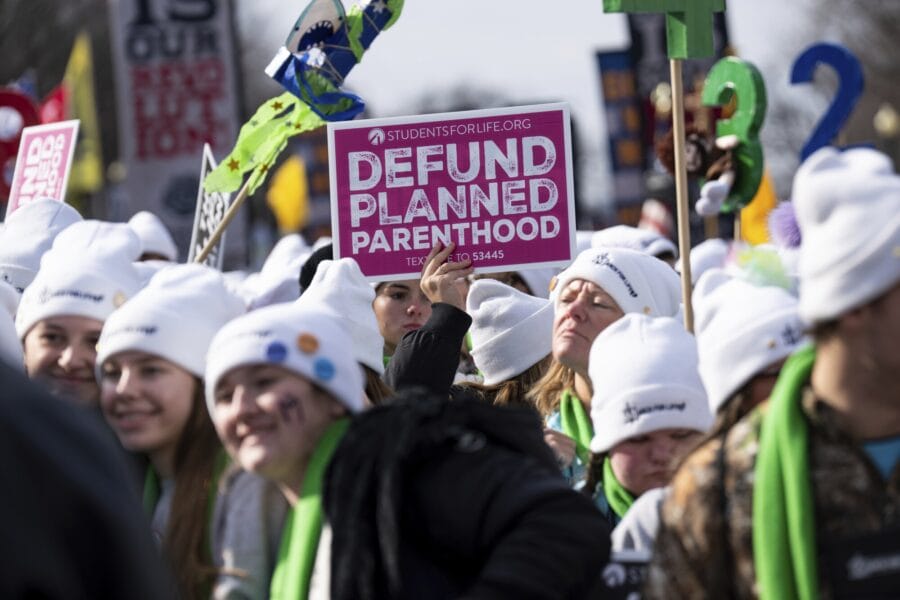By Deanna Wallace
Originally published in The Federalist on February 16, 2016.
Only days into the confirmation process, and abortion advocacy groups are already attacking Supreme Court nominee Neil Gorsuch for the high crime of agreeing with the Supreme Court’s majority decisions in the Hobby Lobby and Little Sisters of the Poor cases.
The question before the court in these cases was whether the Affordable Care Act forced these groups to facilitate insurance coverage for certain life-ending drugs and devices, in violation of their First Amendment conscience rights. In both cases, Gorsuch and a majority of the Supreme Court upheld a long line of precedent respecting the fundamental right of all Americans not to be forced to violate their sincerely held religious beliefs.
While much of the media focused on conscience rights and whether people of faith should comply with the law, missing from much of the commentary was a discussion of how some drugs and devices have the capacity to end unborn life and the political calculations that forced such drugs into the Obamacare mandates.
From the very beginning of the litigation over this coercive Health and Human Services mandate, abortion activist groups like Planned Parenthood and NARAL erroneously depicted Hobby Lobby and the nuns of the Little Sisters as anti-birth control and anti-science. This simply is not true.
Americans United for Life filed multiple “friend of the court” briefs in these cases, demonstrating that it is scientifically undisputed that a new human organism comes into existence at fertilization and that some forms of contraception, including so-called “emergency contraception,” can work to end that human life. Using these scientific truths, AUL further argued—and the Supreme Court agreed—that forcing coverage of these drugs and devices violates conscience rights.
Deceptively Labeling Abortifacients ‘Contraception’
An important distinction that lies at the heart of the scientific debate surrounding this issue is applying the term “contraception” to drugs and devices with post-fertilization mechanisms that may end a developing and distinct human being’s life by preventing implantation. This was no accident.
Abortion advocates shaped the list of contraception that the federal government required to be covered in all health insurance plans and ignored the objections of groups like Americans United for Life, which pointed out the life-ending properties of some of these contraceptive drugs and devices and the potential violations of conscience rights that could arise if their coverage was mandated.
Referring to such drugs and devices as “contraception” is deceiving in that the term implies to the public only the prevention of conception (fertilization). However, for the Food and Drug Administration, the endpoint that defines a drug as a “contraceptive” is the ability to prevent a “pregnancy.” In operational terms, that means preventing a positive pregnancy test ten days to two weeks after fertilization. Thus, drugs and devices that interfere with implantation, which occurs days after fertilization and the creation of a new human organism, are misleadingly categorized as “contraception.”
It’s a Unique Being Before Implantation
While the definition of “pregnancy” has been reformulated over the years to reflect when the developing human embryo implants in his or her mother’s womb, it does not address when the human embryo came into existence. It is undisputed as a matter of science that a new, distinct human organism comes into existence during the process of fertilization, which begins at the time of sperm-egg fusion and before implantation. Scientific literature is replete with statements acknowledging that a new, unique human organism is created before the developing embryo implants in the uterus and before a woman is considered “pregnant.”
Medical studies demonstrate that certain contraceptive drugs and devices have post-fertilization mechanisms that can prevent the already developing human embryo from implanting. For example, the FDA’s approved-labeling information provided to consumers regarding two of the drugs, Plan B and ella, openly acknowledge that both drugs “may inhibit implantation” of the already developing human embryo.
Further, FDA approved-labeling information and studies on copper Intrauterine Devices (IUDs) indicate they also have post-fertilization effects. In fact, clinical guidelines published by the American College of Obstetricians and Gynecologists explicitly states “[p]ostfertilization effects, including damage to or destruction of the fertilized ovum, also may occur.” It is precisely this scientifically proven “damage or destruction” of a developing human embryo that violated the conscience rights of Hobby Lobby and the Little Sisters.
When Gorsuch acknowledged in his concurring opinion that the HHS mandate compelled Hobby Lobby to subsidize payment “for drugs or devices that can have the effect of destroying a fertilized human egg,” he not only had science on his side, he also had the law on his side.
His interpretation of the law was not, as Minority Leader Nancy Pelosi argued, a radical view “far outside the mainstream of American legal thought.” Rather, as a majority of the Supreme Court ultimately agreed, forcing Hobby Lobby and the Little Sisters to subsidize these drugs and devices violated their fundamental right to freedom of conscience. On this issue, it is abortion advocates, not Judge Gorsuch, who are ignoring science in the pursuit of a political agenda.
Deanna Wallace is staff counsel for Americans United for Life. To learn more about UNSAFE, go to www.unsafereport.org or www.aul.org.
Print




